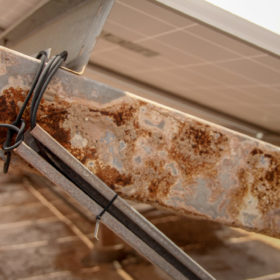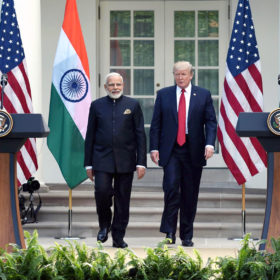BHEL tenders BOS for 100 MW plant at Raghanesda Solar Park
Bids are invited for supply, installation and commissioning of Balance of System (BOS) items for the state-owned engineering major’s 100 MW (AC) solar plant in Gujarat. The last date for bid submission is December 10.
Cheap Indian imports claim prompts Bangladesh to introduce solar standards
Dhaka has heeded complaints about Indian manufacturers allegedly dumping sub-standard PV products over the border and issued a requirement for modules, inverters, charge controllers and batteries to attain IEC electrical standards.
Bangladeshi developer accuses India of dumping poor quality panels over the border
Visitors to this year’s Solar Bangladesh Expo have called for the implementation of quality standards on solar imports – action which the government is currently pursuing – with one industry insider rubbishing Indian-made products.
Telangana targets 5 GW of renewables next year
Decentralized model of solar project development has avoided the need to spend huge amounts on grid upgrades in India’s newest state. With EV charging plans advancing Telangana now intends to change policy to reflect falling solar costs.
IHS Markit: Trackers to account for a third of PV installations
New analysis predicts more than 150 GW of tracker capacity will be installed in the next five years – around a third of all ground mount projects up to 2024. Rapid growth in Europe, the Middle East and Africa; and the better cost structures possible from combining trackers and bifacial modules are singled out as key trends.
Thinktank says India must prioritize a vertically integrated solar supply chain
To develop cost-competitive solar modules the nation must adopt a phased program and set up 15 GW of silicon-ingot-to-solar-module manufacturing capacity by 2024, according to The Energy and Resources Institute.
‘Anti-dumping duty on coated steel will impede solar growth’
Citing the risk to solar projects, lobby group the National Solar Energy Federation Of India has asked the Ministry of New and Renewable Energy to exclude flat steel products coated with alloy of aluminum and zinc from anti-dumping duty.
India leads the way as PV threatens coal-fired power
Falling PV panel prices led to notable year-on-year falls in the cost of developing solar plants around the world. India led the way with PV projects costing a weighted average of just $793/kW of capacity installed in 2018. Costs in China dipped to $879/kW last year, while solar projects in US and Australia cost $1,500.
US-China trade war may lead to dumping of Chinese steel into India
The contraction in Chinese trade flows to the U.S. is likely to result in the dumping in India of Far Eastern electronic and electrical components as well as steel, iron, chemicals and plastic products.
SECI extends 3 GW bid deadline once again
State-owned Solar Energy Corp. of India (SECI) has once again extended the bid submission deadline for its latest 3 GW, manufacturing-linked solar tender, following a tepid response.














